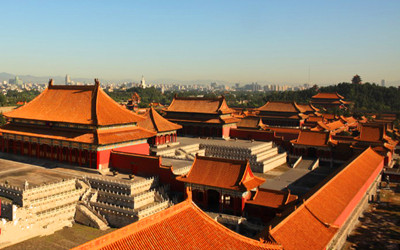Skype: neodalle-travel
Tel: +86 135 7447 2266
E-mail: sales@visitaroundchina.com

 Traditional Chinese architecture has a long history. With strong characteristics of traditional Chinese culture and colorful characteristics of local regional ethnic culture, it is the most exciting and intuitive carrier and expression of Chinese culture, which are listed as below:
Traditional Chinese architecture has a long history. With strong characteristics of traditional Chinese culture and colorful characteristics of local regional ethnic culture, it is the most exciting and intuitive carrier and expression of Chinese culture, which are listed as below:External Features of Ancient Chinese Architecture
Flexibility
Configurations and functions of ancient Chinese architecture, if necessary, can be easily changed, and rooms within them are easy to be dismantled, rebuilt, or shifted for other uses. China's architecture focus particularly on the beauty of group combination, and often adopts a central-axis, symmetric compact composition method. But some types, such as gardens, certain mountain forest Taoist temples and certain residences adopt the method of free combination. The focus is paid to the pursuit of neutral, easy, reserved and deep esthetic characters, giving expressions to the esthetic habits of the Chinese nation.
Unique Structure
Chinese architecture constitutes the only system based mainly on wooden structures of unique charming appearance which differs from all other architectural systems in the world which are based mainly on brick and stone structures. A structure not only has its engineering and technical significance, but the structural and decorative beauty manifested in its resourceful and ingenious combination are themselves part of the architectural beauty. In the case of a wooden structural system, in particular, its complexity and delicacy are unmatched by brick and stone structures, and therefore demonstrate the wisdom of the Chinese. Further processing of the frame members of organic structures and other affiliated frame units forms unique Chinese constructional decoration, including interior and exterior decoration, color painting, wooden, brick and stone sculptures and color glaze, all of which contain very rich techniques and a vivid development process.
Symbolized Decoration
Chinese architecture prefers to use the symbolized decoration on the surface of the building. The most frequent used standards are dragon and phoenix. The dragon and the phoenix are the principal motifs for decorative designs on buildings, clothing and articles of daily use in the imperial palace. The throne hall is supported by columns entwined by gilded dragons, the central ramps on marble steps were paved with huge slabs carved in relief with the dragon and phoenix, and the screen walls display dragons in brilliant colors.
Grand
It is reflected in the lage gate, large windows, large depth hall, and large eaves, which make people a feeling of stretch. The semi-enclosed space formed under the big roof not only protects from the sun and rain, but also has a wide view and direct access to nature. The grand fully embodies the idea of "integration between man and nature" in traditional Chinese architecture.
Vitality
It is reflected in the four-cornered cornices rising, or flying, or standing, floating, making the heavy feeling of buildings (including towers and buildings) appear relaxed, and the solidification appears to be moving. If "atmosphere" arises from reason, the "anger" arises from emotion. The stronger the emotion, the stronger the artistry. The artistic style of traditional Chinese architecture is unmatched by any other country. The artistic nature of Western traditional architecture is not in the building itself, but in the sculpture or painting attached to it viewing art, and it cannot bring vitality to the building itself.
Magnificent
It is reflected in the use of glazed materials which has a long life. With bright colors, it is dazzling under the sun, and it is magnificent in various environments. With higher cost, it symbolizes riches and status of the architecture's owner. It can be seen that the atmosphere, vitality and magnificence have both their specific surface and rich connotations. The combination of the three is the tradition of Chinese architecture.
 Ask Questions ?
Ask Questions ?